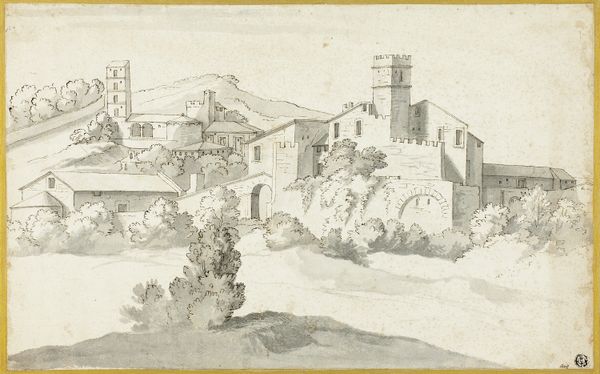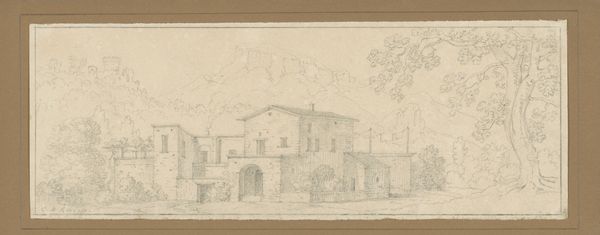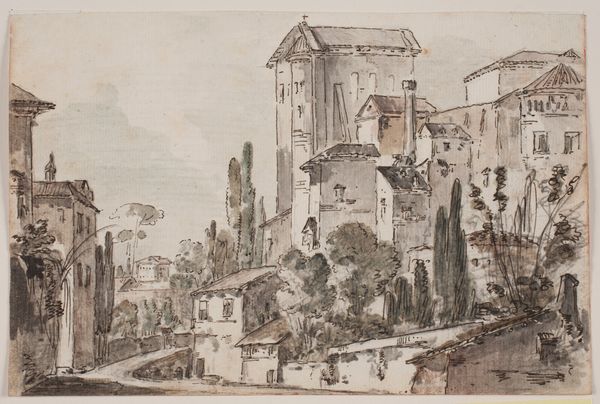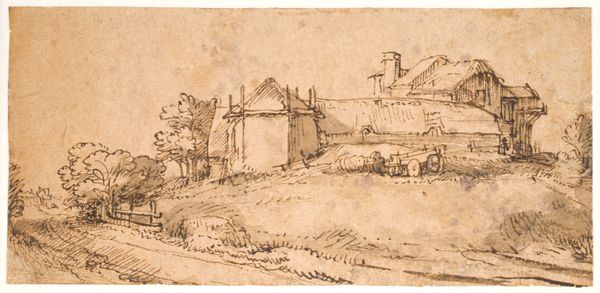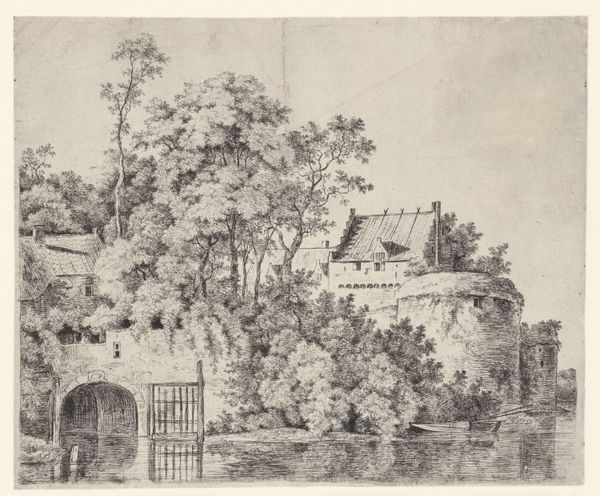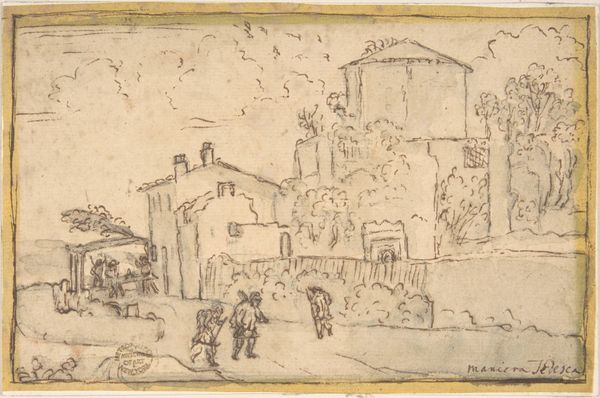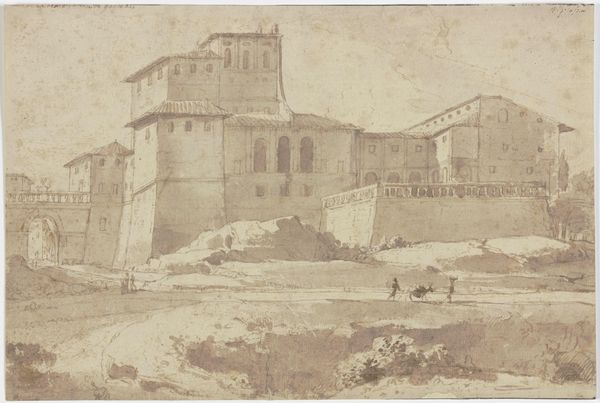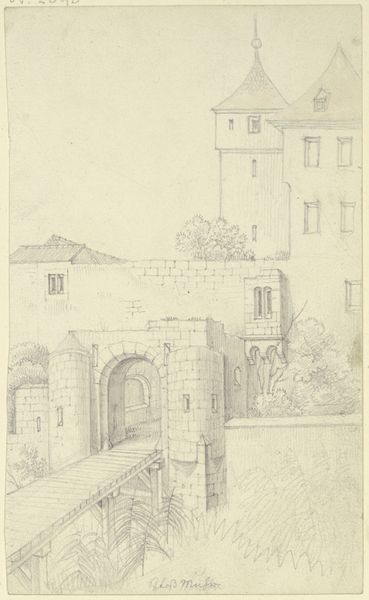
drawing
#
architectural sketch
#
landscape illustration sketch
#
drawing
#
toned paper
#
ink painting
#
etching
#
pen-ink sketch
#
watercolour bleed
#
watercolour illustration
#
italy
#
watercolor
#
environment sketch
Dimensions: 3 3/4 x 6 3/8 in. (9.53 x 16.19 cm) (sheet)10 3/4 x 13 7/16 in. (27.31 x 34.13 cm) (outer frame)
Copyright: Public Domain
Editor: Here we have Giacomo Quarenghi's "Italian Landscape," dating back to the 18th or 19th century. It's a drawing done with pen, ink, and watercolor, and it strikes me as a really interesting interplay of precise lines and softer washes. How do you interpret this work, focusing on its visual elements? Curator: Observe how the composition is structured: Quarenghi uses stark linearity to define the architecture against the softer, more fluid rendering of the landscape. Note the strategic placement of light and shadow. The strong shadows lend depth and volume. Where do you think the light source originates, and how does this affect the overall visual balance? Editor: It seems to be coming from the left, creating strong contrasts on the building’s facade and the trees. The path in the foreground and mountain in the background add a feeling of depth, despite the limited color palette. I like the texture the varied line-work brings. Curator: Exactly. Consider the architecture: Quarenghi emphasizes its geometric forms through hatching and cross-hatching. It provides a structured counterpoint to the natural, less defined shapes of the surrounding landscape. This interplay reveals how he understood the spatial relationship between constructed forms and natural environments. Do you see other compositional choices he's made to enhance this contrast? Editor: Now that you mention it, the wall extends into the landscape creating a transition from architecture to nature. Also, the limited colour palette ensures our attention is not drawn away from the main elements of the work. It really invites us to focus on the geometry of form, and the importance of shading. Curator: Precisely. By focusing on these formal elements, we can appreciate the skill and artistic intention evident in Quarenghi's representation of the Italian landscape. The careful composition and meticulous rendering techniques, particularly the contrast between line and wash, create a captivating image. Editor: I see it so differently now. Paying closer attention to how the elements are arranged has deepened my appreciation for its artistry.
Comments
minneapolisinstituteofart almost 2 years ago
⋮
Giacomo Quarenghi is sometimes called the last of Italy’s great architects. He realized his most ambitious projects in Russia, working for Catherine the Great (1729–1796). In his younger days he traveled throughout Italy, making drawings of architecture wherever he went. This lovely sketch comes from that time. Buildings like these formed Quarenghi’s design sensibility until he encountered the writings of the great Italian architect Andrea Palladio (1508–1580). After that, he devoted himself to classical ideas from ancient Greek and Roman architecture, filling his work with symmetry and formal colonnades.
Join the conversation
Join millions of artists and users on Artera today and experience the ultimate creative platform.
